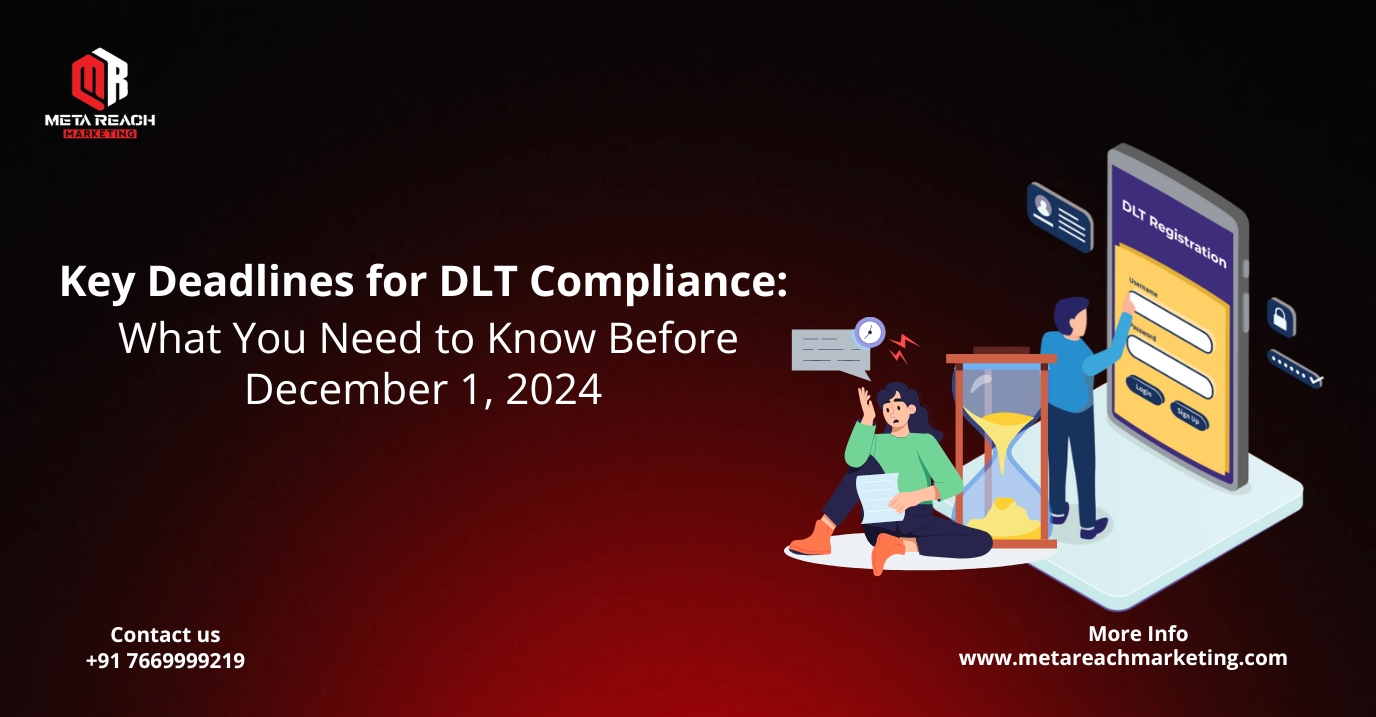Learn about TRAI's DLT guidelines for secure SMS delivery, spam control, and OTP protection. Ensure compliance with easy steps for businesses.
The Telecom Regulatory Authority of India (TRAI) has set a significant deadline for compliance with its new traceability guidelines, which will come into effect on December 1, 2024. This initiative aims to enhance consumer protection against spam and fraudulent messages, particularly focusing on commercial messages that include one-time passwords (OTPs). Below, we will explore the key aspects of these guidelines, their implications for businesses and consumers, and essential steps to ensure compliance.

TRAI's traceability guidelines are part of a broader effort to combat spam and phishing through improved message verification. The core elements of these guidelines include:
All businesses and organizations must register on a DLT platform to send SMS. This includes both the principal entity (the sender) and bulk SMS service providers. Without DLT registration, SMS delivery will be blocked.
Each sender ID (now referred to as "headers") and message template must be submitted and approved on the DLT platform before use. Messages sent from unregistered headers or those not matching pre-approved templates will be flagged or blocked.
The new regulations introduce distinct categories for SMS, which include:
Reserved for essential communication such as One-Time Passwords (OTPs) and other critical alerts. This route is strictly for banks and financial institutions, meaning other businesses cannot use it for transactional messages.
These messages are intended for advertising products or services. They can only be sent to non-DND (Do Not Disturb) numbers between 10 AM and 9 PM.
This category is further divided into:
Service (Implicit): For informative messages related to services that do not require explicit consent.
Service (Explicit): For messages where customers have opted in to receive communications.
Consumers now have greater control over the messages they receive. They can provide consent for promotional messages, opt out at any time, and manage their preferences through a user-friendly dashboard.
Customers can register complaints regarding unsolicited messages, with a streamlined process for resolution by telecom operators.
Customers can set specific time windows during which they are willing to receive promotional messages, even if they are on the DND list.
The entire system will operate on a blockchain-based DLT framework, ensuring that all transactions are recorded and traceable. This technology aims to minimize spam and fraudulent activities by providing complete transparency in message delivery.
Businesses must ensure they complete their DLT registration before the deadline to avoid disruptions in their messaging services. This includes:
While these changes are designed to improve the messaging ecosystem, businesses may face challenges such as:
During the transition phase, there may be delays in message processing as businesses adjust their systems to comply with new regulations.
Companies may need to invest in technology upgrades to support DLT compliance, which could involve additional costs and resources.
Employees will need training on the new processes related to DLT registration and compliance management.
Familiarize yourself with the different categories of SMS under the new rules:
Implement a robust opt-in mechanism for customers to provide consent for receiving promotional messages. Ensure that you have clear records of consent to avoid penalties.
To streamline compliance and improve message management:
Develop clear and compliant message templates that adhere to TRAI DLT registration guidelines:
Conduct training sessions for your marketing and communication teams on the new DLT regulations:
Set up a process for ongoing monitoring of compliance with DLT regulations:
Maintain open communication with your telecom service providers:
Adapting to the new DLT regulations requires proactive planning and execution. By completing necessary registrations, understanding message categories, enhancing customer consent management, investing in technology, creating compliant templates, training staff, monitoring compliance, and engaging with telecom providers, businesses can navigate these changes effectively.
Implementing these strategies not only ensures compliance but also enhances customer trust and improves overall communication effectiveness. For businesses in Noida, services like Free DLT Registration simplify the process for managing bulk SMS campaigns and ensuring uninterrupted services. As the deadline approaches, taking these steps will help businesses maintain their SMS services while fostering a secure messaging environment for consumers.
Tag: DLT registration, Free DLT Registration, DLT regulations, DLT.